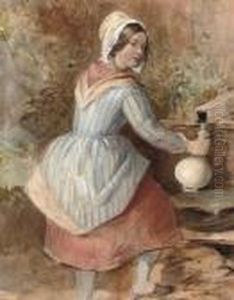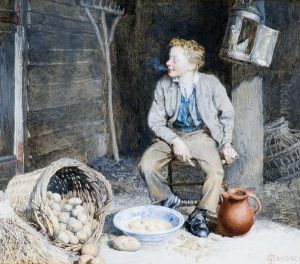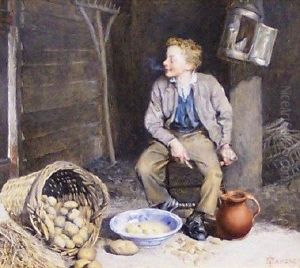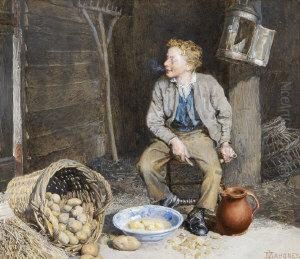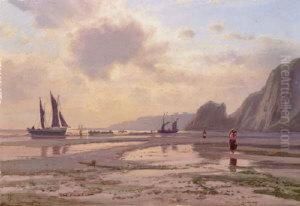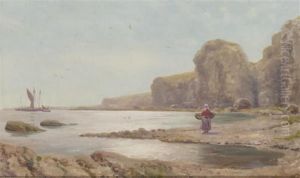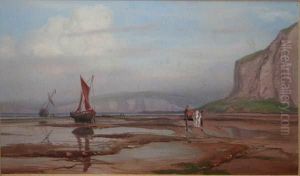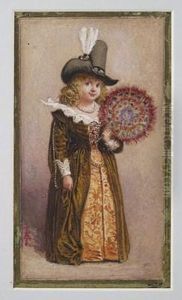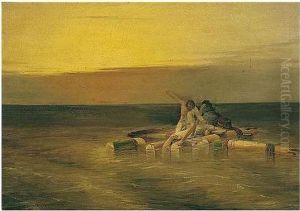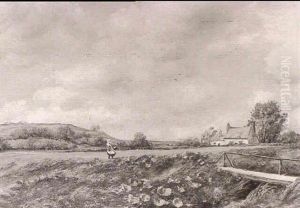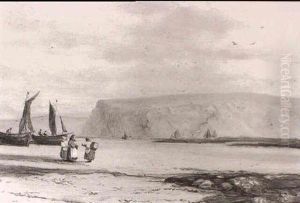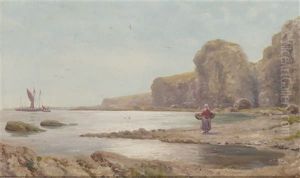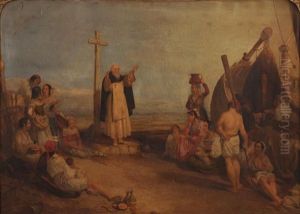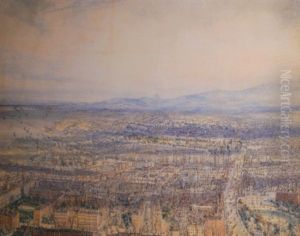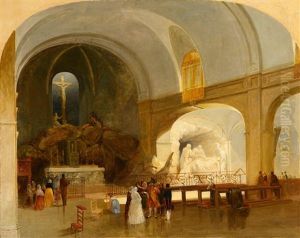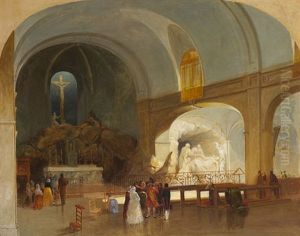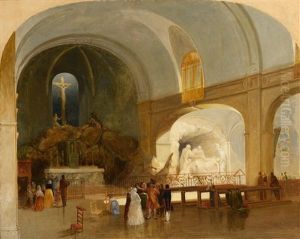James Mahoney Paintings
James Mahoney was an Irish illustrator and artist, born around 1810. He became known for his work in the mid-19th century, a period when the art of illustration was flourishing due to the expansion of the publishing industry. Mahoney worked for the Illustrated London News, which was one of the world's first illustrated weekly newspapers, providing a platform for artists to reach a broad audience with their work.
Although not as renowned as some of his contemporaries, Mahoney's contributions to the field of illustration were significant. He is particularly remembered for his collaboration with the famous writer Charles Dickens. Mahoney was commissioned to illustrate Dickens's serialized novel 'The Mystery of Edwin Drood', which was left unfinished upon Dickens's death in 1870. His illustrations for the novel are noted for their atmospheric quality and their ability to capture the Victorian era's complexities.
Mahoney's style was characterized by its detailed and realistic portrayal of characters and settings. He often included intricate backgrounds and was adept at conveying mood through his use of light and shadow. His work is an example of the Victorian narrative illustration, which aimed to complement and enhance the stories it accompanied.
Throughout his career, Mahoney faced the challenges common to many artists of his time, such as the irregularity of commissions and the need to appeal to popular tastes. Despite these challenges, he managed to leave a lasting impression through his illustrations, especially in the context of Dickens's literature.
James Mahoney died in 1879, leaving behind a body of work that continues to be appreciated by those interested in Victorian art and literature. His illustrations not only embellished the texts they accompanied but also provided a visual context that helped readers of the time connect more deeply with the stories and their settings.
